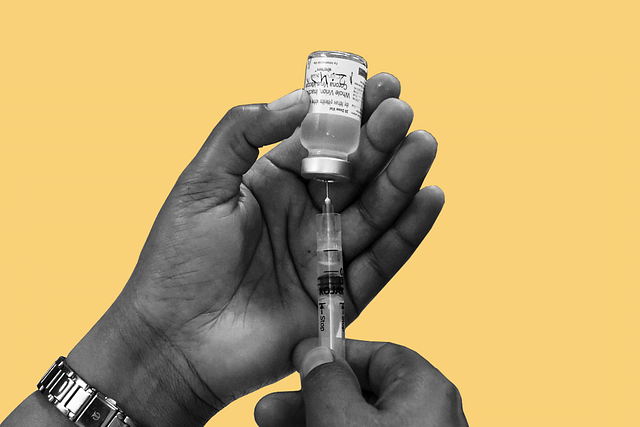
1st May D-Day For New Vaccine Policy Seems Dicey; Better Late Than Sorry
It is better to get the policy right than to rush into something as half-baked as the one we currently have.
Having spent two frustrating days trying to get my wife and myself our second doses of vaccine, I realise that we have two basic problems: one is the short-term supply crunch, especially of Covaxin, and the other is the split nature of the vaccine pricing mandate.
In the current scenario, the Centre gets it at one price, the states are supposed to negotiate another, and private healthcare providers and corporates at customised rates based on the higher announced price lists.
From events and developments over the last few weeks, one can deduce the following issues and policy gaps:
One, the old policy of steadily expanding access to the vaccine by age-group is dead as dodo. That policy may have been flawed, but the decision to suddenly expand eligibility to all above 18 when supplies are yet to be ramped up is even more flawed. The new policy is a half-measure driven by political pressure and short-term thinking.
No policy can work unless we take a long-term view on vaccines, for manufacturers cannot ramp up supplies just because demand is going to be high in the next few months.
Two, the triple pricing model needs serious tweaking. You cannot expect 28 states to negotiate separately for their own short-term vaccine supplies, and then expect sanity in pricing outcomes.
If Maharashtra wants 15 million doses and Uttar Pradesh 10 million, quite clearly these are immediate needs, and not long-term assessments of vaccine requirements.
Logically, the Centre should consult states, aggregate their short-term and long-term needs, and then negotiate with manufacturers, both domestic and global, for the best possible prices. Private players could then be asked to buy vaccines on a commercial basis for their own needs, and for vaccinating the public that can afford to pay much higher prices.
Three, there is an important policy goal now that was not apparent earlier: vaccines have now become a public good and not a private benefit or optional extra for dealing with surging Covid cases.
This means those who want it free should get it free. This again suggests that the Centre must do the deep bargaining with manufacturers, and then split the subsidy bill with states depending on their orders. The ideal would be a single price for supplies to government (not Rs 150 for Centre, Rs 300-400 for states etc), where subsidy costs being shared in two buckets.
There can be a free tranche where the Centre foots the entire bill for people in the eligible categories. Then there can be a 50:50 split for people beyond the eligible list. This central and state eligibility lists can be revised once every month, giving states and vaccine makers enough flexibility to work out their own economics.
Fourth, some commentators have suggested that closing the doors for foreign vaccines was a mistake, but if you pencil in the need for high state subsidies, it actually made more sense to enable domestic suppliers with lower cost structures to ramp up production than to subsidise foreign players, most of whom cannot deliver at costs below $15-20 a dose.
Even at market-based prices, Serum Institute can supply doses at around $5, and lower with hard negotiations. No foreign supplier can offer doses at less than twice or thrice that range.
Moreover, vaccines like Pfizer’s and Moderna’s need cold storage infrastructures that don’t exist in India. In any event, that part of the vaccine policy has been amended, and all can supply to whichever part of the market that is interested in them.
Fifth, pricing. One reason why Indian vaccine makers have pushed up their price lists to ranges of Rs 400-600 (and even higher for private buyers) is because they know that demand is going to be a problem after some time.
It takes time and investment to boost capacities, storage and distribution networks, but can anyone guarantee that demand will stay anywhere near current levels in 2022, or even beyond.
The only way to overcome this hurdle is by the Centre offering two things: one, demand visibility for at least 12 months ahead, and a guarantee of minimum cost compensation for idle overheads in case demand drops dramatically once this Covid surge ends.
The 12-month visibility will enable states and vaccine makers to not only help with preparations for a third or fourth wave, but also yield useful data on how vaccine makers can be compensated over the medium term, when demand may be spiky and unexpected.
Sixth, more investment needs to be made for the development of new vaccines for new mutants, and this also means more genomic testing more frequently. And we cannot ignore the overwhelming need to find safer ways to protect children and young adults under the age of 18.
The time to think about these issues is now, when cases involving the non-adult age groups are still small. We cannot presume they will be protected forever by god or good luck. When last heard, the virus was not sparing the young because it suddenly developed compassion for them.
Its priority is its own propagation, and if adults get vaccinated, it can be expected to mutate and target the unprotected young for its own reasons.
Hopefully, these issues will be sorted out by 1 May, when the new vaccine policy is rolled out. But it may not be a bad idea to hold back the shift to universal vaccination and appropriate pricing for a few more days as long as we get it right. It is better to get the policy right than to rush into something as half-baked as the one we currently have.